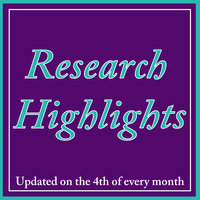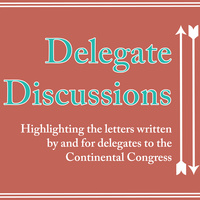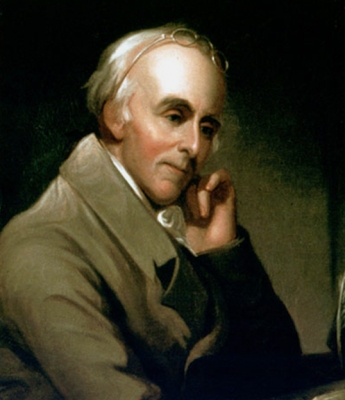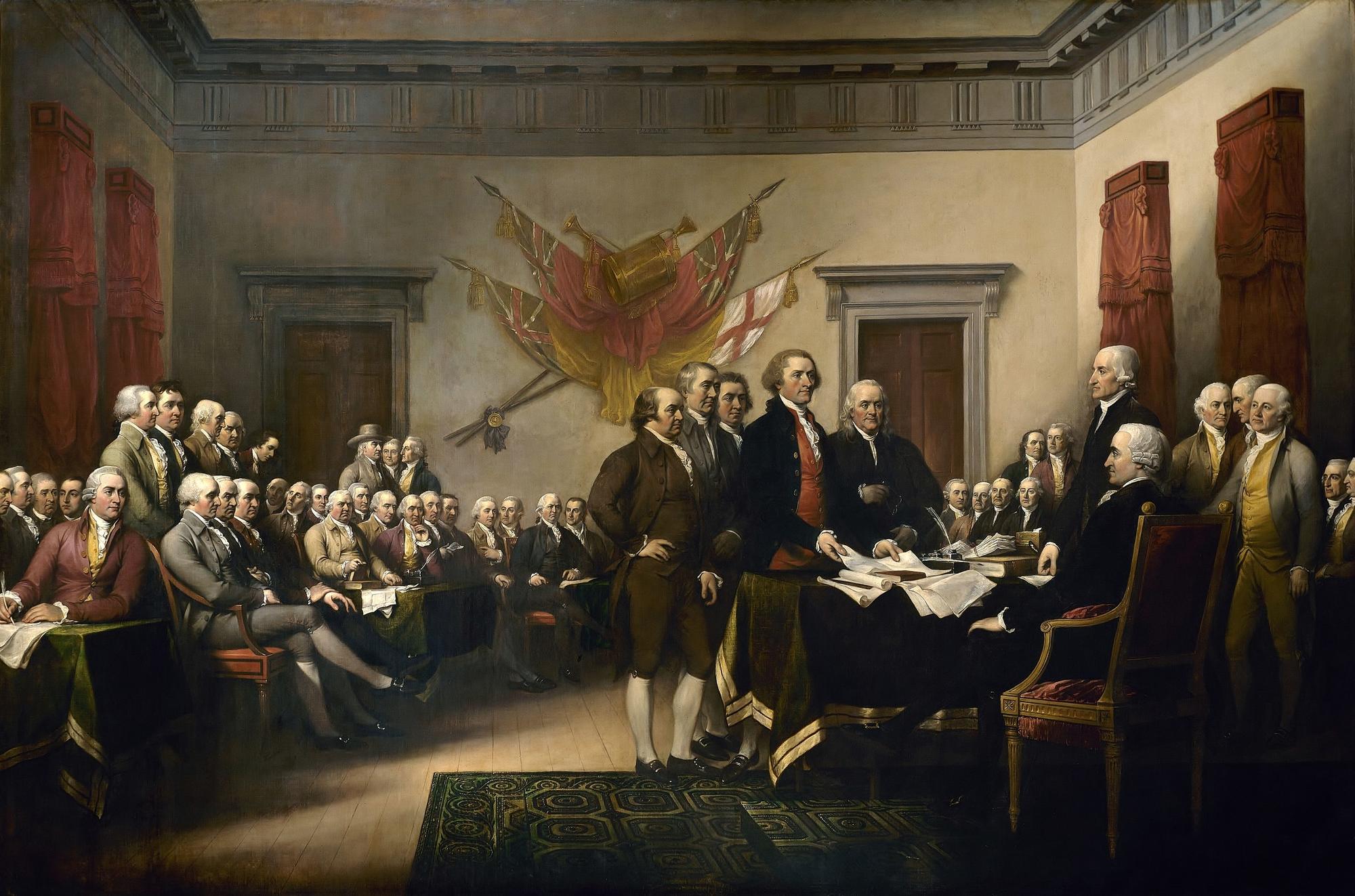

Independence, confederation, and foreign alliances. For months, these three elements were the talk of the Continental Congress. When Richard Henry Lee’s resolution was presented on June 7, 1776, it called for these three things, in this order:
His resolution, or more accurately, his three resolutions were adapted from those of the Virginia Convention, agreed to on May 15 : “Resolved, unanimously, That the Delegates appointed to represent this Colony in General Congress be instructed to propose to that respectable body to declare the United Colonies free and independent States, absolved from all allegiance to, or dependence upon, the Crown or Parliament of Great Britain; and that they give the assent of this Colony to such declaration, and to whatever measures may be thought proper and necessary by the Congress for forming alliances, and a Confederation of the Colonies, at such time and in the manner as to them shall seem best: Provided, That the power of forming Governments for, and the regulations of the internal concerns of each Colony, be left to the respective Colonial Legislatures.”

Minutes of the Virginia Convention, Library of Virginia
The Journals of the Continental Congress show that these three resolutions occupied the debate on Saturday, June 8 and Monday, June 10. John Hancock even let George Washington know, “we have been two Days in a Committee of the Whole deliberating on three Capital Matters, the most important in their Nature of any that have yet been before us…” On the 10th, Congress resolved, “that the consideration of the first resolution be postponed to this day, three weeks, and in the mean while, that no time be lost, in case the Congress agrees thereto, that a committee be appointed to prepare a declaration to the effect of the said first resolution.” This pushed the discussion of independence to July 1. Read more about Delegate Discussions: The Lee Resolution(s)

In May 1743, Benjamin Franklin issued “A Proposal for Promoting Useful Knowledge among the British Plantations in America.” Franklin and others founded.
September 4, 2017

When the engrossed parchment copies of the Declaration of Independence and the United States Constitution were installed at the National Archives on December 15, 1952, President Harry S. Truman connected the two documents as follows:
“Everyone who holds office in the Federal Government or in the government of one of our States takes an oath to support the Constitution of the United States. I have taken such an oath many times, including two times when I took the special oath required of the President of the United States. This oath we take has a deep significance. Its simple words compress a lot of our history and a lot of our philosophy of government into one small space. In many countries men swear to be loyal to their king, or to their nation. Here we promise to uphold and defend a great document. This is because the document sets forth our idea of government. And beyond this, with the Declaration of Independence, it expresses our idea of man. We believe that man should be free. And these documents establish a system under which man can be free and set up a framework to protect and expand that freedom.”
For the majority of the history of the United States, the Declaration of Independence and the Constitution have been invoked in this way. But what about the physical connections between the Declaration and the Constitution? September 17, 2017 marks the 230th anniversary of the signing of the United States Constitution, an event both similar to and quite different from the signing of the Declaration of Independence. In this month’s research highlight, we examine the preparation and signing of these two foundational documents, and the individuals involved in both. . Read more about September Highlight: The Declaration and the Constitution
December 4, 2016

Founding Fathers. Founders. Fathers. Founding Mothers. Signers. Framers. Patriots. The list of terms to describe the individuals who "founded" the United States of America can go on and on. This month, we examine the etymology and accuracy of these terms, and find where the signers of the Declaration of Independence fit in.
Merriam-Webster
founding father (n): 1. an originator of an institution or movement; 2. often capitalized both Fs: a leading figure in the founding of the United States; specifically a member of the American Constitutional Convention of 1787
Oxford English Dictionary
founding (adj): Associated with or marking the establishment of (something specified); that originated or created. Spec. founding father (freq. with capital initials), an American statesman of the Revolutionary period, esp. a member of the American Constitutional Convention of 1787
Safire's Political Dictionary (1968, 2008)
Founding Fathers: A group of revolutionaries who took their changes on treason to pursue the course of independency, who are today viewed reverently as sage signers of the documents of U.S. freedom.
November 4, 2016

John Adams and Thomas Jefferson were the only signers of the Declaration of Independence to become President of the United States, but they certainly weren't the only signers elected to public office in the new federal government. In fact, seven signers were part of the 1st United States Congress (1789-1791), eight including President of the Congress, John Adams. This month, with Election Day fast approaching, we highlight the signers of the Declaration of Independence who became congressmen, vice presidents, and presidents in the new United States.

A fun fact to start: The first and second sessions of the 1st US Congress were held in Federal Hall in New York City. From December 1790 through May 1800, Congress met in Congress Hall, adjacent to Independence Hall (then known as the State House), where the Declaration of Independence was signed. In this reproduction of an engraving by Charles Willson Peale, Congress Hall is the building just to the right of the clock on Independence Hall.

In February 1790, Dr. Benjamin Rush wrote a letter to John Adams, disparaging the histories of the American Revolution that had been written thus far: "Had I leisure, I would endeavor to rescue those characters from Oblivion, and give them the first place in the temple of liberty. What trash may we not suppose has been handed down to us from Antiquity, when we detect such errors, and prejudices in the history of events of which we have been eye witnesses, & in which we have been actors?" John Adams felt much the same, lamenting in his response written in April, "The History of our Revolution will be one continued Lye from one End to the other. The Essence of the whole will be that Dr. Franklins electrical Rod, Smote the Earth and out Spring General Washington. That Franklin electrified him with his Rod--and thence forward these two conducted all the Policy Negotiations Legislation and War . These underscored Lines contain the whole Fable Plot and Catastrophy."

In the context of this conversation, Rush informed Adams that he had written "characters of the members of Congress who subscribed the declaration of independence." These characters are a part of Rush's autobiography, Travels Through Life or Sundry Incidents in the Life of Dr. Benjamin Rush, which was completed around 1800. The autobiography was intended for Rush's children and was later published, but in 1790, Rush offered Adams a glimpse. Read more about Delegate Discussions: Benjamin Rush's Characters

Last month, we debunked John Trumbull's Declaration of Independence. Often assumed to depict the signing of the Declaration of Independence, Trumbull actually chose to immortalize the moment when the Committee of Five presented their draft of the Declaration to John Hancock and the Continental Congress.
So, when was the Declaration of Independence signed?
Spoiler: NOT ON JULY 4TH. *
*Most likely
Here is everything we know about the signing of the Declaration of Independence, the signatures, and why those signatures matter.

In previews last year, the award-winning musical Hamilton included a short song at the top of Act 2 (between Thomas Jefferson's "What'd I Miss?" and "Cabinet Battle #1") that was cut before the musical moved to Broadway. The number was called "No John Trumbull", and antagonist/narrator Aaron Burr sang the following lines:
You ever see a painting by John Trumbull?
Founding Fathers in a line, looking all humble
Patiently waiting to sign a declaration, to start a nation
No sign of disagreement, not one grumble
The reality is messier and richer, kids
The reality is not a pretty picture, kids
Every cabinet meeting is a full-on rumble
What you 'bout to see is no John Trumbull
- Hamilton: An American Musical, Lyrics by Lin-Manuel Miranda

The founding of the United States of America was certainly not the "pretty picture" John Trumbull's Declaration of Independence leads the viewer to believe. More specifically, the events surrounding the Declaration of Independence had very little resemblance to this now famous painting. . Read more about Unsullied by Falsehood: No John Trumbull